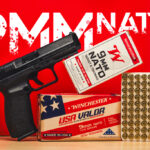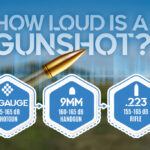
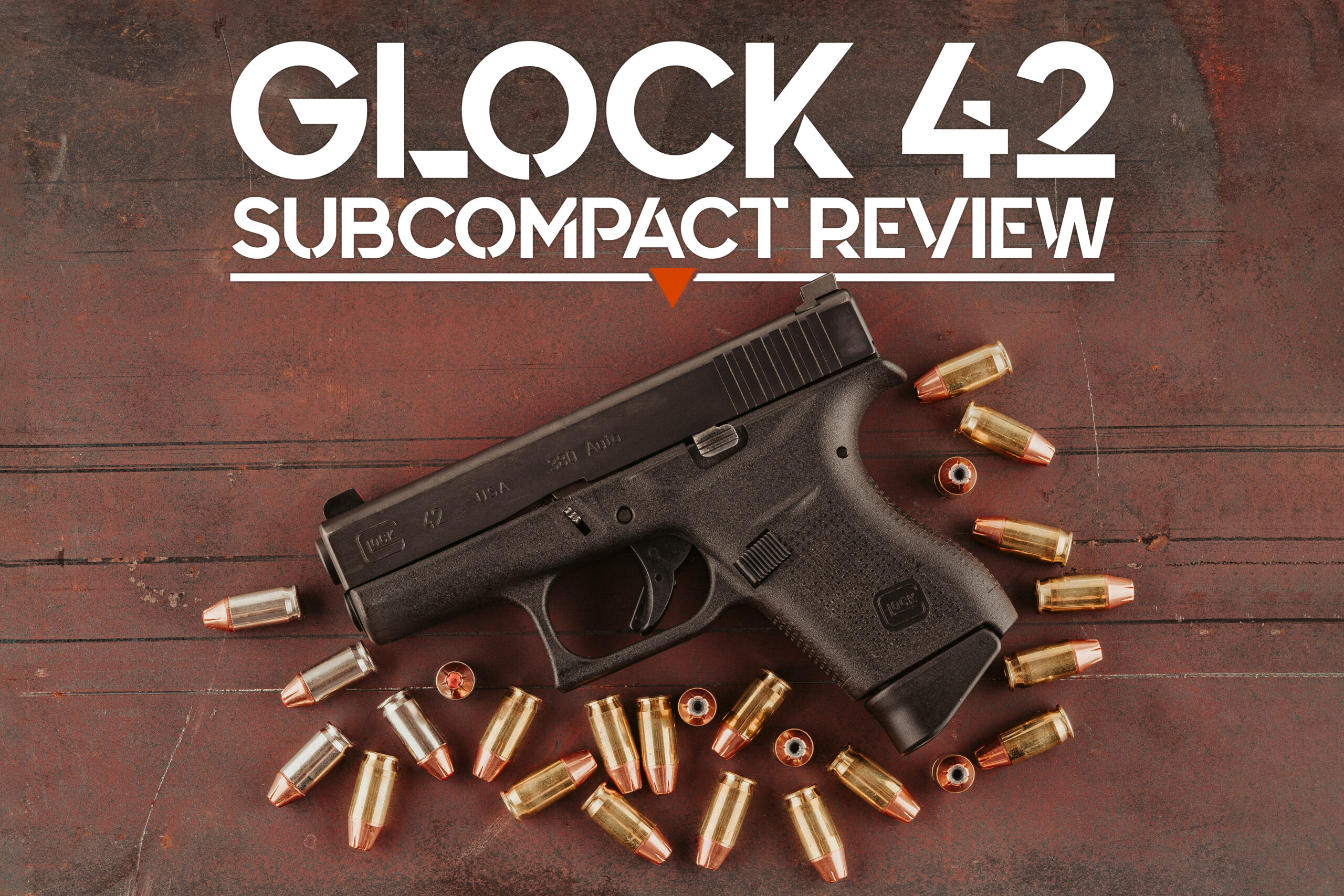
Guest Writer: Kenzie Fitzpatrick
I can still remember when the Glock 42 was announced and how much its emergence disrupted the firearms industry. The Model 42 was Glock’s very first .380 caliber pistol and the smallest gun Glock had ever made. I remember this vividly because I was a year into being able to carry a handgun legally. Each Glock 42 review I read described it as an attractive, small, slim, easy-to-conceal pistol that made me very interested in owning it.
The 42 model was announced in January 2014, and my very first shooting competition was a Glock Sport Shooting Foundation (GSSF) match held in August 2014 at Talon Range in Tallahassee, FL. There, I first saw the Glock 42 in action, and shooting it in the “Pocket Glock” division of GSSF became legal. The popularity of the Glock 42 also led to the Glock 43, chambered in 9mm, to be released on April 14, 2015. The G43 also became a “Pocket Glock” division pistol.
At the time, the Glock 42 was a smaller competitor to the Smith & Wesson Shield 9mm pistol. It would be almost four years before Smith & Wesson released their own .380 Shield option. The Smith was the first concealed gun I ever carried. The Glock 42 has a striker-fired action with internal safeties and a trigger safety built into the gun, whereas the Shield has an external thumb safety. The market exploded with concealed carry permit holders eager to get their hands on the latest from Glock.
Glock 42 Specs
First, let’s take a look at the specs for our Glock 42 review. For those familiar with the Glock lineup, you can think of the Model 42 as the slightly smaller brother of the Model 43. This sub-compact series focuses on reduced size and weight with improved concealed carry ergonomics and performance.
| Glock 42 | Specs |
|---|---|
| Caliber | .380 ACP |
| Barrel Length | 3.25″ |
| Overall Length | 5.94″ |
| Slide Length | 5.75″ |
| Width Overall | 0.98″ |
| Height W/ Mag | 4.13″ |
| Avg Weight Loaded | 16 oz / 1 lbs |
| Avg Trigger Pull | 5.5 lbs |
| Capacity | 6+1 |
| Sights | White Dot/GNS/Ameriglo |
| Finish | Black nDLC |
| MSRP | $429 |
Glock 42 Review: A Break Down
As I mentioned earlier, the 42-model pistol is chambered in .380 auto and has a capacity of 6+1 rounds. It’s lighter, shorter, and narrower than Glock’s 26 and 27 subcompact models. Without a magazine inserted, the gun weighs just 12.17 ounces. It’s still under a pound with a fully loaded magazine, weighing 15.87 ounces. Of course, like all Glocks, it is a polymer, striker-fired pistol with the Safe Action system built into the trigger.
The pistol’s overall length from beavertail to muzzle is 5.94 inches. Its width is 0.98 inches. Finally, the gun’s height, including an inserted magazine, is 4.13 inches. The barrel in the G42 is 3.25 inches long. These pistol’s dimensions are small and hard to replicate in a polymer, striker-fired handgun, especially one with the reliability of the Glock brand name.
Glock built and designed this weapon for concealed carry. The company answered a market demand for a pistol that was easy to conceal, simple to disassemble, and with hassle-free built-in safeties that the end user didn’t have to manipulate to fire the gun. If you’re familiar with one Glock pistol, you’re familiar with them all. They all have the same takedown bar and layout of parts, load and unload the same, and need oiling in the same places. That’s what’s great about Glock; there isn’t a learning curve for any of their new pistol models since they’re pretty much the same.
Compatibility
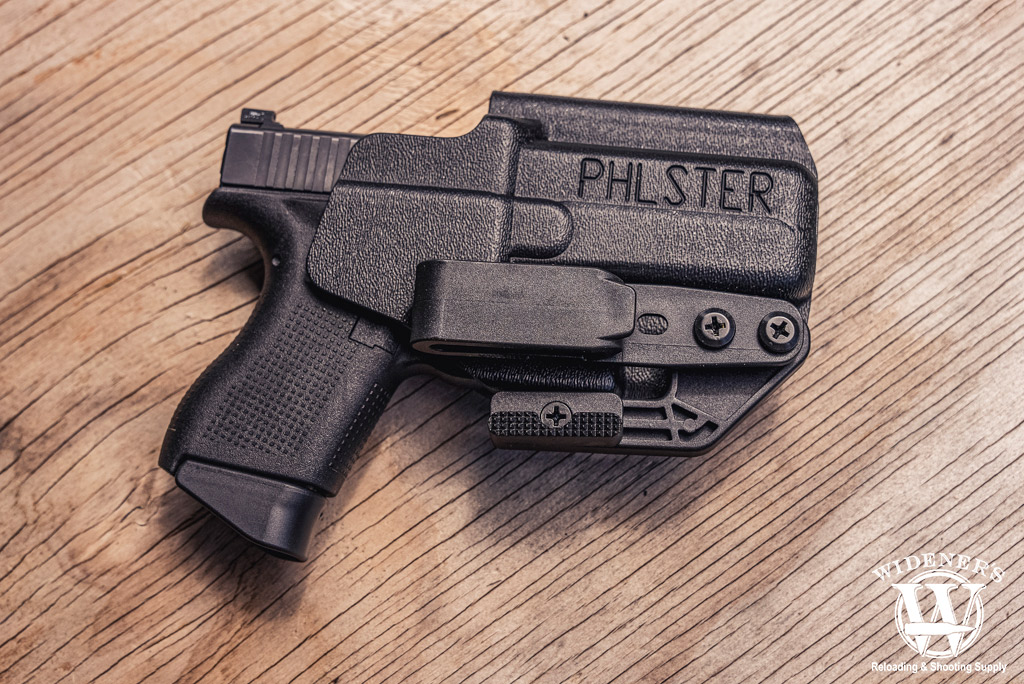
The Glock 42 isn’t as highly compatible with other guns and accessories as other subcompact options on the market.
Holsters
Glock’s been around forever and isn’t going anywhere anytime soon. Just about every holster manufacturer you can name makes holsters for Glock pistols. I think holsters for Glock pistols are the easiest to find and are made as fast as Glock can launch new pistol models. Holsters come in various designs for different carry positions, such as appendix carry, ankle carry, IWB with one or two clips, OWB, and more. Because the Glock name is so popular, the availability of Glock 42 holsters is endless.
Aftermarket Iron Sights
As with the holsters, it’s easy to find aftermarket iron sights that fit Glock pistols. Some brands compatible with the Glock 42 are TruGlo, AmeriGlo, Night Fision, Trijicon Night Sights, and XS Sights. These are similar in that they are night sights that glow in the dark. Each uses tritium differently and has a unique design. Some sets of sights have matching dots on the front and rear sight.
Other sets might feature a set of dots on the rear sight and a different color-ringed front sight. There are also ones designed as a V for the rear sight and an O for the front sight. This aftermarket compatibility with sights is vital because everyone sees and picks up colors differently and might understand one set of unique sights over the traditional three circles.
Red Dot Optics for the Glock 42: Review
The Glock 42 does not come red dot optic ready. Glock has an entire line called MOS, or Modular Optic System, for only the most popular Glock pistols. The Glock 42 isn’t in the MOS options, but the Glock 48 and Glock 43X are. If you think of the purpose of the Glock 42, it was designed for concealed carry. If you’ve never taken a defensive firearms class or trained in defensive scenarios, you may not know that you’ll probably never see your sights if you have to use your gun to defend yourself.
I am a big fan of red dot optics, and all my carry guns have red dots mounted. I have taken numerous defensive and scenario-based training and never once saw the red dot optic on my sim pistol when I had to use it. The reason is that most scenarios happen so quickly and in such close quarters that you have seconds to draw and shoot at the threat. You’re using a natural point of aim to neutralize the threat by shooting at as much center mass as possible until the threat stops and you can get away.
I share all this because not having a red dot optic on your carry gun should not be a deal breaker. It is a lot easier to train with your carry gun and understand what you are doing wrong by watching your red dot move, but if you can read your iron sights well, they’re telling you the same thing a dot does.
Lights
The Glock 42 has no accessory rail, so you can’t attach whatever light you like to the pistol. However, Streamlight designs gun model-specific pistol lights and lasers that will attach without an accessory rail. The light is easy to install and uses set screws to tighten from each side of the gun. Some people might perceive a light’s more “permanent” installation as a downside vs. a quick detach light, but I also believe a more permanent attachment style is less likely to fall off a gun. For example, if you mount the Streamlight, make sure you find a compatible holster molded for the gun and light combination.
Magazine Extensions
Whether you like the Glock 42 or 43, magazine extensions are something I highly recommend. The capacity is so small that adding even a +2 extension is comforting. The magazine extensions also add length to the pistol for those with bigger hands. I have always, at the very least, added pinky extensions to carry gun magazines so that I can grip the gun properly without my fingers dangling off the gun.
The Glock 42 is compatible with many brands that have designed base pads for this pistol. Taran Tactical Innovations, Vickers Tactical, and Hyve Technologies are just a few brands I know to make quality magazine extensions for the Glock 42.
Performance of the Glock 42: Review
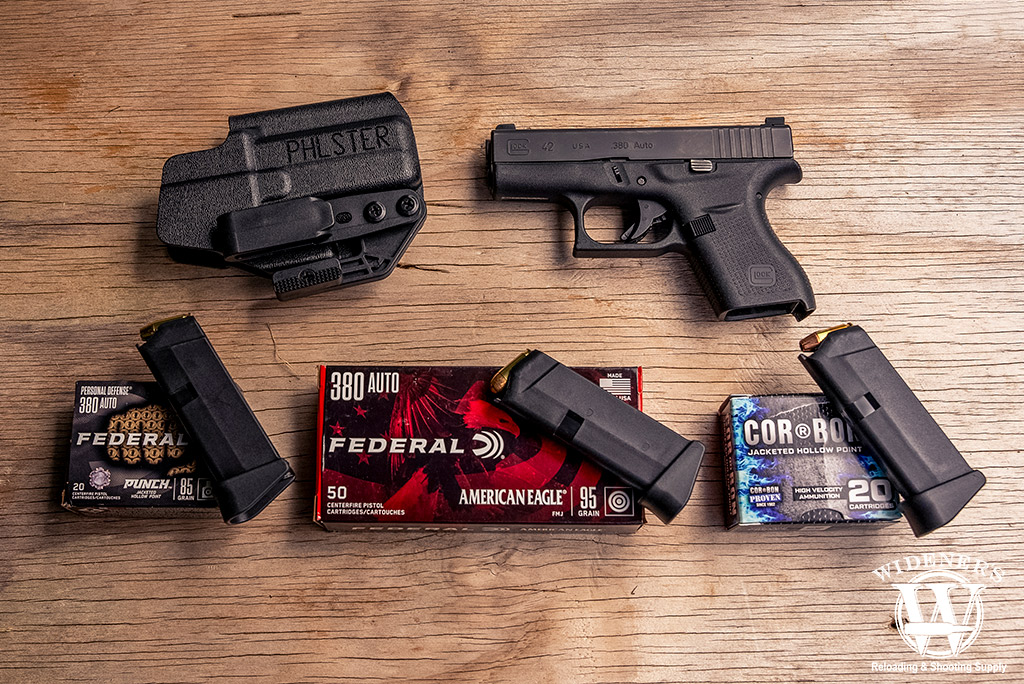
Ammo compatibility matters: Be sure to test your ammo at the range before using it in your everyday carry gun.
Durability
I’ve owned the Glock 17, 34, 42, and 43 model pistols. I competed with the Glock 17 pistol for years in GSSF, USPSA, and 3 Gun competitions. It was and is a reliable gun that performs no matter how much dirt, debris, or rust is on it. This demonstrates the Glock brand’s durability and my trust in these guns.
I occasionally carry the Glock 43 with more challenging outfits to conceal a gun in or for specific places where no printing is the best. I’ll admit, I don’t think I’ve cleaned or oiled this gun in over a year, yet at an event I hosted a month ago, the gun ran flawlessly for 100+ attendees. I do not recommend neglecting to clean, oil, or maintain a carry gun, but a Glock is usually more forgiving than most pistols.
Ammunition Selections
The examples of performance above were all with full metal jacket ammunition. Glocks feed FMJs remarkably well, and most coated and flat-nosed bullets, too. The issue I had at the range was with the hollow point ammunition. It’s crucial to ALWAYS test your gun with the defensive ammunition you plan to carry in your firearm. Hollow points are so drastically different with varying bullet profiles, types of brass, powder, and primers, and are loaded to different lengths.
The Glock 42 did not feed the Corbon ammunition well at all. The hollow point would get physically stuck on the feed ramp’s lip and remain horizontal. I think the combination of the bullet profile and the cartridge’s overall length caused the malfunctions. The Federal Punch ammo fed well, and the FMJ American Eagle ammo had no issues, which I expected.
Accuracy
The Glock 42 has a 3.25-inch barrel, which means projectiles do not have a long time to spin and stabilize for more accurate shots. The spread of each ammunition was about the same distance. Since the Glock 42 was designed for carry and not competition or longer-distance shooting, these groups will do just fine in a defensive scenario. The accuracy level is not what I’d like to carry, but it will get the job done.
Concealability
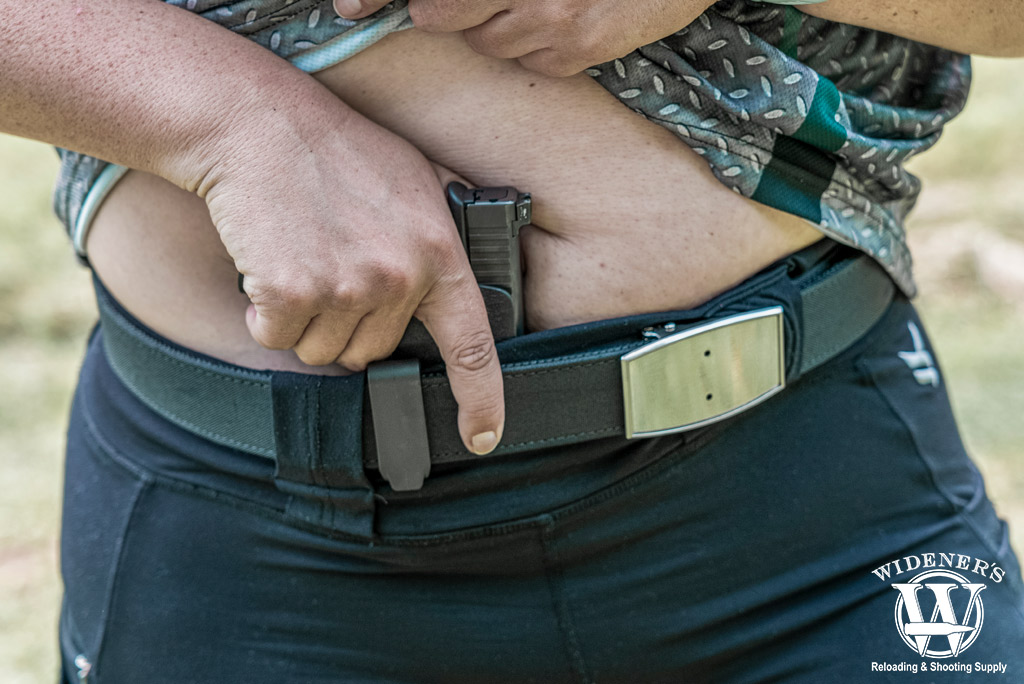
The concealability of the Glock 42 is excellent, with the right holster, you’ll forget it’s even there.
It is almost impossible for anyone of any size to print with this small handgun. You would have to be trying to intentionally flash your gun to show this firearm with an IWB holster. I have become familiar with PHLster holsters, which match the durability of Glock firearms. The singular clip to attach it to a belt is all you need to carry this gun IWB.
This small of a handgun is exceptionally comfortable to carry appendix-style, but will also work with a 4 O’clock carry position. I also always wear a rigid belt daily, and that is also crucial for carrying a gun all day. You need a stiff belt that will hold up a firearm anywhere on your body without it sagging, or you will have to adjust it all day. I prefer the Nexbelt and KORE Essentials belts; both are customizable to your waist size, use a ratcheting system to tighten, and are sturdy belts that hold up to full-size carry guns.
Experience Level of the Reviewer
My goals are to teach as many people as possible how to shoot guns correctly, carry daily, and, of course, get people into competition shooting. My goal is to make it easy for someone to find a gun and holster combination that works for them by knowing what’s quality and what’s crap. I also understand men and women are different and have taught people of all ages and various heights and weights.
I’ve tested hundreds of holster designs, aftermarket iron sights, lights, lasers, and other accessories. In fact, I have a giant bin full of holsters, belly bands, and alternative methods to carry a gun that I take with me to classes for people to try. By looking at people, I know that what might work for one person will not work for another.
I also have years of experience carrying the Glock 43, which is the same pistol but chambered in 9mm. That means I have entrusted my life to that gun performing anytime, anywhere, and with my chosen defensive ammunition. I have carried IWB, both Appendix and at 4 O’clock. I have also tried holsters with two clips, one giant clip, holsters canted at an angle for a more natural draw, and holsters with a claw for an even more concealed gun. So, I was the perfect candidate to review the Glock 42 handgun as I have much experience with its sister model.
Price Breakdown of the Glock 42: Review
You can find the Glock 42 for anywhere between $400 to $450. If you are a new, current, or renewing GSSF member, you can purchase a GLOCK pistol at discounted pricing once per membership year. You’re welcome!
The price of a concealed carry gun should never be your primary focus. You shouldn’t be looking for the cheapest option or a used handgun. Not to deep dive into used guns, but you should never carry a used gun that you don’t know anything about nor how to check wear or replace parts. If you have a good gunsmith or armorer who can replace parts, check functions, and ensure your gun is in working order, that’s a different story. But if you plan to purchase a used gun and not inspect it at all, that can be a big mistake. The abuse and neglect some people put on firearms would amaze you.
The Glock 42 is comparable to other carry guns on the market and is more expensive than the Smith & Wesson Shield and Taurus GX4 Carry, to name a couple. It’s cheaper than the Springfield Hellcat and Sig Sauer P365 models. Any decent carry gun will cost between $400 and $700.
Glock 42 Review: Still A Good Buy?
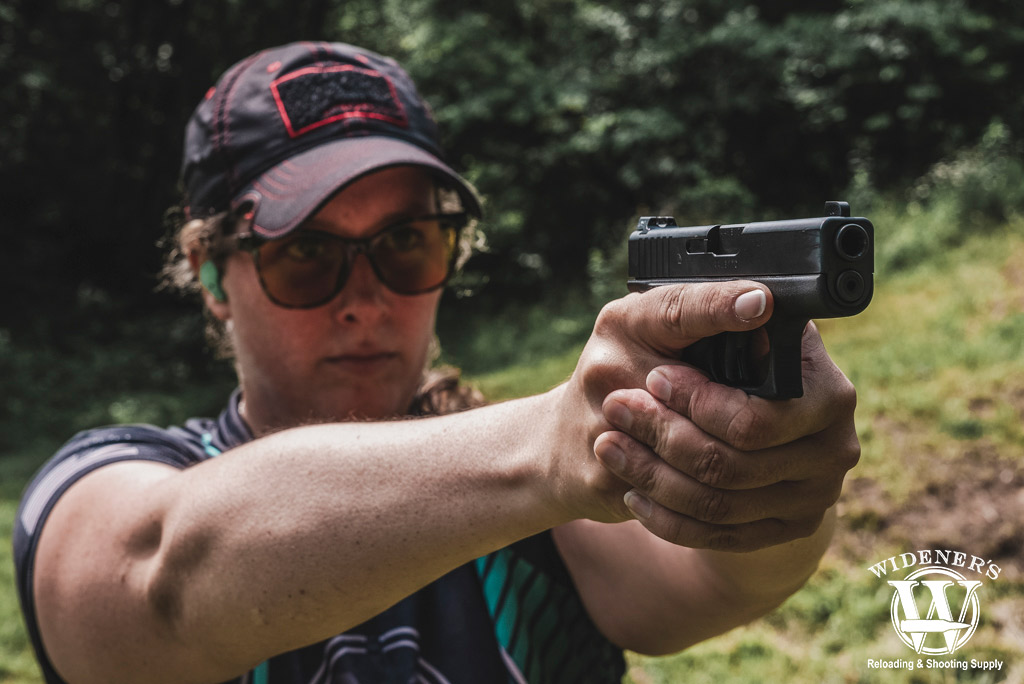
Low-recoil, low-maintenance, easy concealability, with Glock reliability. There’s a lot to like about the subcompact Glock 42.
If you’re looking for an easy-to-conceal, low-maintenance, simple pistol that won’t break the bank, consider the Glock 42. It’s a gun with a ton of aftermarket support and one that isn’t going anywhere. It has Glock’s known reliability, and it’s easy to find at any local gun store or online.



